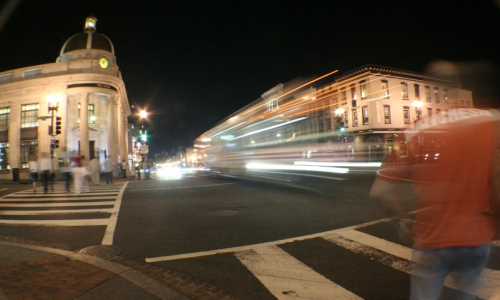Until recently, the growth of American cities was largely a suburban story. It developed in response to urban afflictions at the turn of the last century and was compounded by government policy and the automotive industry. Today, the tide is turning. Communities across the country have started to embrace urbanism. Depending on who you ask, urbanism either competes with or complements l0w-density suburban growth by addressing some of the problems of the suburban lifestyle, including over-reliance on cars and depletion of natural land.
It’s a complex topic, but it’s one with which business journalists, especially those covering real estate and development, should become familiar.
What exactly is it?
Urbanism is tricky to define. Loosely, it is how residents of a city or town interact with the manmade environment and infrastructure. For most city planners and developers, urbanism refers to walkable urban environments in which a mix of single-family homes and multiunit complexes are generally within a mile of shopping, dining and even places of employment. This type of community has long existed in places like Manhattan, and prior to the automobile, in most major cities throughout the U.S. and world. That began to change post WWII, when the American dream became synonymous with owning a detached home in suburbia. Government officials and business leaders grew to ignore city centers, leading to the urban decay of the 1970’s and 80’s.
Now the pendulum is swinging in the other direction. Civic battles over the walkability of communities are being fought in zoning boards across the country.
Where to find stories in urbanism
Property listing sites such as Zillow are one great place to gauge the interest of residents in walkable urbanism. In most instances, prices per square foot are higher in downtown areas than in suburban ones, sometimes significantly so. In urban areas, the value of the underlying land makes up a bigger proportion of the total price of a property.
County assessors, who appraise properties for the purposes of taxation and compile information like price per square foot and previous owners, are another key resource. These assessments are a good indication of whether walkable urban areas are in high demand, and whether people are generally willing to pay a premium for them.
But the really big stories are in City Hall. For example, in August an appeals board in Phoenix will hear the case of a property owner who wants to almost entirely eliminate the parking requirements for his forthcoming brewpub and banquet hall. The owner, along with an urbanism advocate who filed an appeal on his behalf, says that it should be up to the business to survive regardless of available parking. They argue that off-street parking mandates discourage walking and public transit and ineffectively use land. The case may serve as a barometer of the city’s true interest in this type of development.
Explore the larger issues
Issues in urbanism interplay with issues in the environment, transportation, race and class. Suburban areas are generally only open to those who can afford to drive, leaving walkable downtowns accessed by public transit behind. Earlier in the 20th century, land use covenants prevented certain races from acquiring home loans or property in the suburbs.
Environmental activists in the urbanism movement also point to the ecological toll of suburban sprawl. Driving is less environmentally friendly than walking or public transit and increases suburban reliance on oil. The impact is felt far beyond the immediate community. And, notes Arizona State urban planning scholar David A. King, “land use planning is transportation planning in cities.” In urbanism, the built environment is directly related to how people use transit.
Look at the limits
King says it’s important to understand that urbanism is not a cure-all.
Ultimately, the forces that urbanism seeks to counter are market-driven, and they are enforced through policy. Suburbs did not arise in a vacuum, and just because activism-inclined academics and business leaders think that walkable urban environments are a viable solution does not mean everybody does.
Reporter’s Takeaway
• Get an overview of urban vs. suburban property values in your community though websites such as zillow.com. Keep in mind that the value of the land itself will disproportionately impact the price of urban properties.
• Meeting notes and minutes for most city business are public record and generally available online. Business journalists should look for municipal cases regarding zoning, parking requirements and other issues regarding business development.
• Look at urbanism as an intersectional issue to see how it can impact the residents of your city in various demographic and economic brackets.











